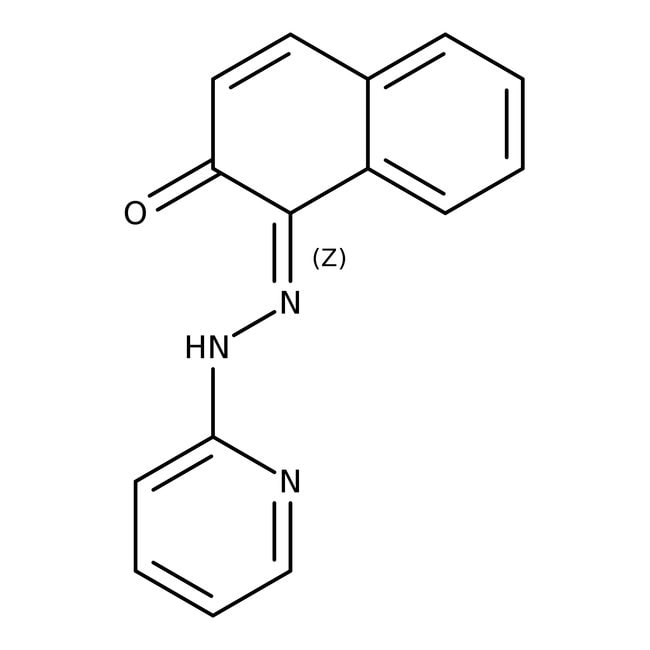Search Thermo Fisher Scientific
1-(2-pyridylazo)-2-naphtol, 98 %, Thermo Scientific Chemicals



1-(2-pyridylazo)-2-naphtol, 98 %, Thermo Scientific Chemicals
Identifiants chimiques
Spécifications
Description
This Thermo Scientific Chemicals brand product was originally part of the Alfa Aesar product portfolio. Some documentation and label information may refer to the legacy brand. The original Alfa Aesar product / item code or SKU reference has not changed as a part of the brand transition to Thermo Scientific Chemicals.
Le 1-(2-pyridylazo)-2-naphtol est largement utilisé comme indicateur de complexométrie. Il est utilisé comme réactif pour l’extraction et la détermination spectrophotométrique (pour l’analyse colorimétrique) de nombreux éléments métalliques de transition comme l’arsenic, le chrome, le cobalt, le cuivre, le cadmium, le manganèse, le zinc et le zirconium. Il est également utilisé pour l’analyse de l’uranium et du thorium en solutions.
Solubilité
Insoluble dans l’eau.
Remarques
Incompatible avec les bases fortes et les agents oxydants forts.
Figures
Documentation et téléchargements
Certificats
Foire aux questions (FAQ)
Citations et références
Sécurité et manipulation
Classification of the substance or mixture
CLP classification - Regulation(EC) No 1272/2008
Label Elements
Signal Word
Warning
Hazard Statements
H315 - Causes skin irritation
H319 - Causes serious eye irritation
H335 - May cause respiratory irritation
Precautionary Statements
P261 - Avoid breathing dust/fume/gas/mist/vapors/spray
P280 - Wear protective gloves/protective clothing/eye protection/face protection
P302 + P352 - IF ON SKIN: Wash with plenty of soap and water
P305 + P351 + P338 - IF IN EYES: Rinse cautiously with water for several minutes. Remove contact lenses, if present and easy to do. Continue rinsing